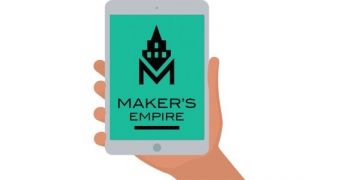3D printers may have started out as an unruly, complicated mess, but that can basically be said about every human invention. Things have been quickly improving though, to the point where even kids can use 3D printers now.
Anyone can push a button and, once they've gone through at least the first year of school, read a few instructions.
Understanding is another issue entirely though, and it takes more than the average amount of time and perseverance to learn how to use, say, a CAD program.
Not to mention that installing a 3D printer and making it work with a PC isn't exactly a walk in the park either. Unless you're already familiar with drivers and software installation.
Not something you'd expect to see in a pre-teen, definitely. Nevertheless, Australian startup company Maker's Empire wanted even kids to be able to 3D print.
It couldn't bypass the need for some basic computer know-how (drivers and such still need to be installed after all, and let's not mention the unpacking and assembly).
What it could do was release a 3D design app, though, called Maker's Empire (yes, the same name as the company itself).
The computer science and engineering grads that make up Maker Empire's team have participated in a program that helps businesses make their inventions profitable (ANZ Innovyz START accelerator).
The main purpose was accessibility, according to the company CEO Jon Soong. Kids aren't likely to try and do anything that isn't fun, not without considering it a chore or punishment anyhow.
The app was developed in a partnership with 3D Printing Systems and will be tested by three elementary schools in Adelaide, Australia. It's too bad that only an iPad version of the app exists for now.
If this trial program proves a hit with the younger audience, there might not be a need for 3D printing design college studies in the future.
Or, well, ever. 3D printing technology is a recent development, at least as far as mass awareness and adoption is concerned. Recently, a degree was approved for 3D Bioprinting, which does involve a lot of chemistry and biology expertise, so it will stick around, but actual familiarity with 3D printers might become part of the normal school curriculum in short order.
No point in this not happening when 3D printing something is as straightforward as printing a page or drawing. It just takes a lot longer for a model to be made than a paper sheet.

 14 DAY TRIAL //
14 DAY TRIAL //